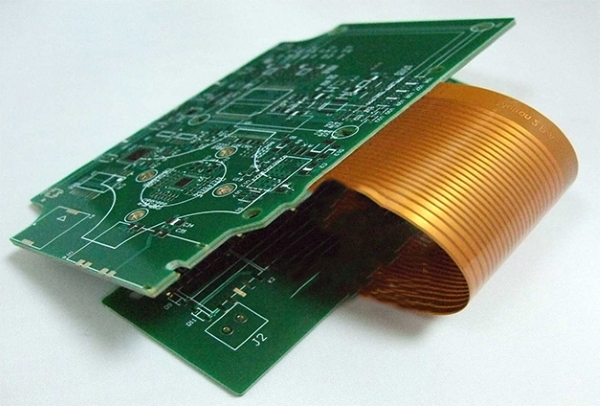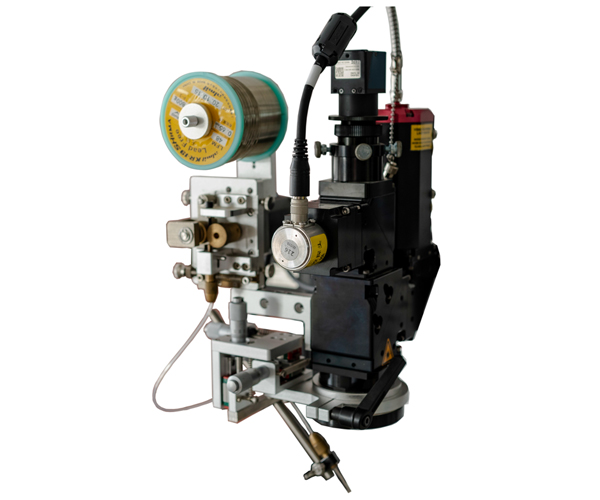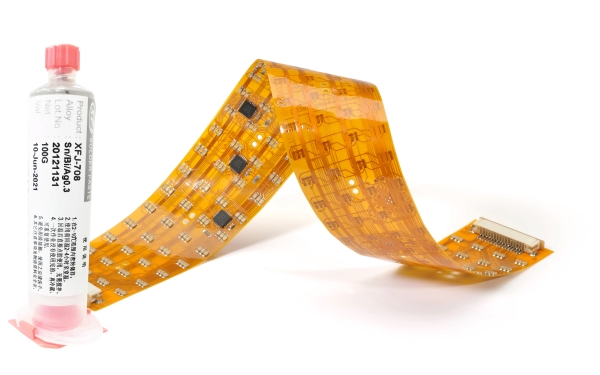Comparison of Laser Solder Wire vs. Laser Solder Paste Welding Effects
In laser soldering applications, FPC (Flexible Printed Circuit) to PCB welding represents one of the most common processes. Typically, two methods are available: laser soldering with solder paste deposition and laser soldering with wire feeding. How does one select the appropriate method? Songsheng Opto-Electronics provides the following professional analysis.

FPC Flexible Board vs. PCB Rigid Board Diagram
Welding Precision Comparison
Laser Solder Wire:
As a heat source, laser enables high-precision welding with more accurate and stable solder joints. It provides superior control over the melting and solidification range of solder material. For simple solder joints with larger pad spacing and regular shapes, the laser can precisely melt solder wire at the target location, forming plump and robust solder joints.
Laser Solder Paste:
While also capable of high precision, the paste's fluid characteristics make its flow and diffusion during laser melting comparatively harder to control precisely. Particularly at joint edges, slight overflow beyond pad boundaries may occur. However, for densely-spaced or complex-shaped joints, solder paste demonstrates better gap-filling capability and superior adaptability.
Welding Strength Comparison
Laser Solder Wire:
Produces fully-formed solder joints with excellent pad wettability. The melted wire establishes strong metallurgical bonding with both PCB pads and FPC copper foil, ensuring reliable electrical connectivity and mechanical strength. Such as maintain integrity under mechanical stress or vibration.
Laser solder paste:
The flux components in solder paste enhance wettability and bonding strength between solder and pads. Its superior gap-filling capability increases effective contact area, thereby reinforcing joint strength. This creates durable connections that ensure long-term operational stability.

Wire Feeding Mechanism Module Diagram
Welding Speed Comparison
Laser Solder Wire:
Demonstration faster processing speed for individual solder joints, particularly when pads are spaced or distributed. The laser can rapidly melt solder wire without requiring the complex coating and pretreatment procedures necessary with solder paste.
Laser Solder Paste:
Offers significant speed advantages for high-density joints through drag soldering or scanning welding techniques. Capable of simultaneously processing multiple joints, achieving over 100% faster cycle times compared to spot welding, making it ideal for high-volume production requirements.
Weld Appearance Comparison
Laser Solder Wire:
Produces geometrically consistent joints typically exhibiting smooth, hemispherical profiles free from burrs or solder splashing. This superior surface finish enhances both product aesthetics and reliability
Laser Solder Paste:
Improper parameter control may cause solder splashing (popcorning) and bead formation, potentially resulting in:
Irregular joint surfaces
Residual solder beads
Inter-pad short circuits
Precise process parameter optimization is critical for acceptable cosmetic results.
Cost Consideration Comparison
Laser Solder Wire:
Laser consumable costs with no additional coating equipment requirements, providing distinct advantages for cost-sensitive applications like consumer electronics entry-level products.
Laser Solder Paste:
Higher material costs coupled with necessary dispensing equipment (e.g., jet dispensers or squeegees) increase both capital expenditure and process complexity. However, the combined benefits of quality and throughput maintain competitive advantages for premium
product manufacturing.

Laser Solder Paste Diagram
Application Scenario Comparison
Laser solder wire is more suitable for soldering applications with widely spaced pads and simple pad geometries, as well as projects with strict production cost control requirements, such as the production of ordinary electronic toys and simple electronic control boards.
Laser solder paste, on the other hand, is more advantageous for applications requiring adaptation to complex solder joint shapes, improved soldering efficiency, and precision. It is widely used in high-end fields with stringent quality and reliability requirements, such as smartphones, laptops, and automotive electronics. Typical applications include dense chip packaging on mobile phone motherboards and soldering of miniaturized circuit boards in automotive electronic control units (ECUs).
We believe you now understand the advantages and limitations of both laser solder wire and solder paste welding methods. Based on actual requirements, you can choose the appropriate soldering approach. Ultimately, the priority is to ensure soldering quality, yield rate, and efficiency before considering cost control.
With over a decade of expertise in laser soldering technology, Songsheng Opto-Electronics has accumulated extensive knowledge and experience in both processes and equipment. We offer systematic solutions and are available to provide reliable recommendations upon consultation.
Contact: Mr.Xiao
Phone: +86-13385280662
E-mail: market001@whlaser.cn
Add: Room 02, Floor 5, Building 9, Gezhouba Sun City, No. 40, Gaoxin 4th Road, Donghu New Technology Development Zone, Wuhan